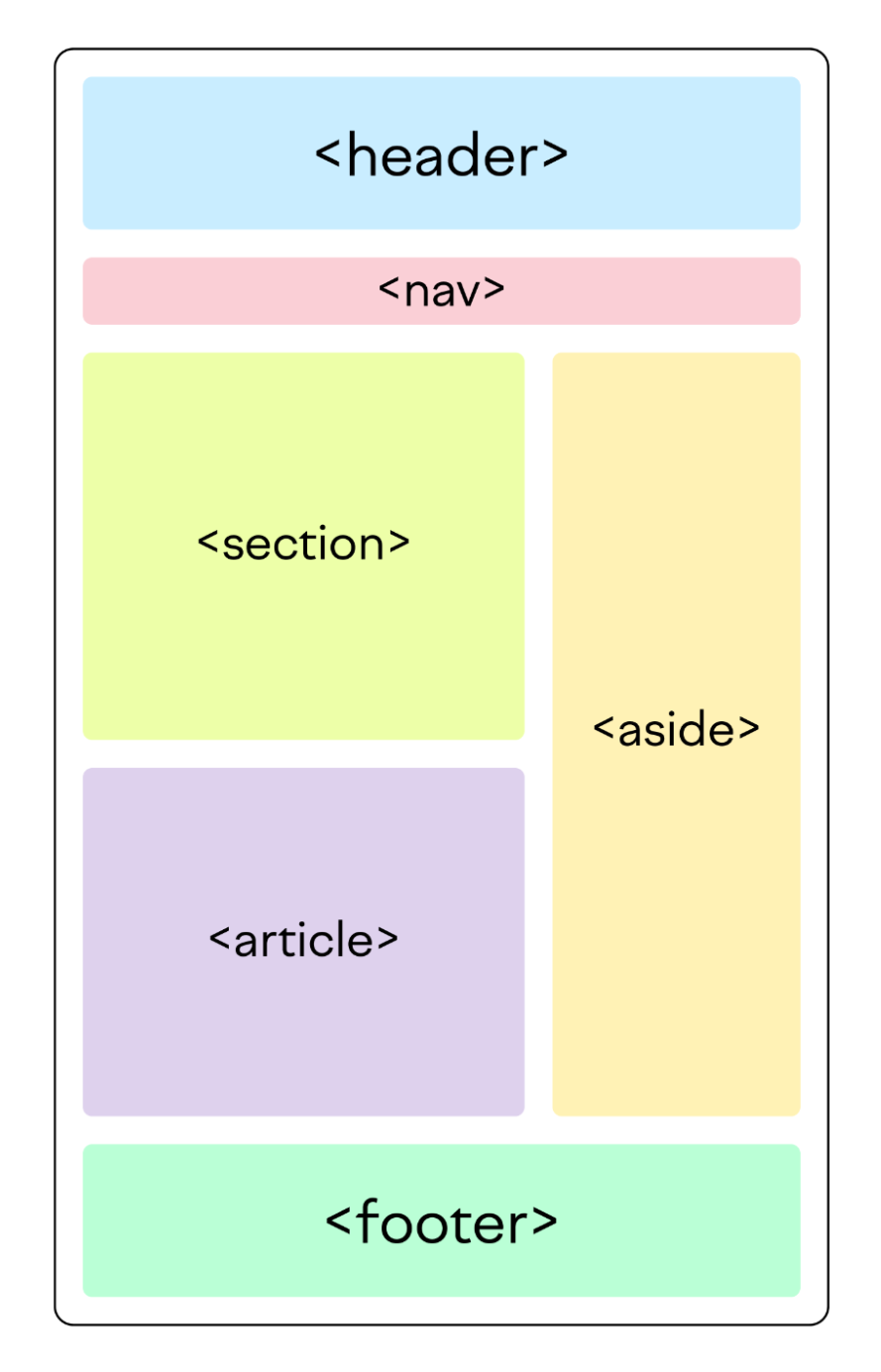ARTICLE
could stand independently of the page/site it is on (often used for blog posts)
document type (!DOCTYPE html = HTML5)
root of an HTML document, containing all HTML content (except !DOCTYPE tag)
We can (and should) specify the language as an attribute (lang="en-US")
document information: TITLE (required), META, LINK, SCRIPT, NOSCRIPT, STYLE, BASE
container for all the content that will be displayed
introductory information of a webpage or section (main header, navigation links)
contains navigation links (often included within the HEADER tag)
main content (one per webpage); should not contain any content that is repeated across documents such as sidebars, navigation links, copyright information, site logos, and search forms
could stand independently of the page/site it is on (often used for blog posts)
not necessarily self-contained; forms part of something else
can be used as a container for other HTML elements; STYLE, CLASS, and ID are commonly used attributes.
self-contained content, such as illustrations, diagrams, and photos

visible heading for a DETAILS element (such as the "Details" title below)
additional details the user can view or hide
usually includes contact information, copyright information, and some site navigation